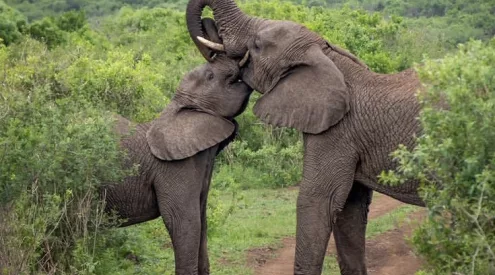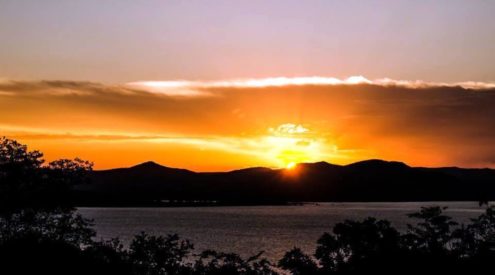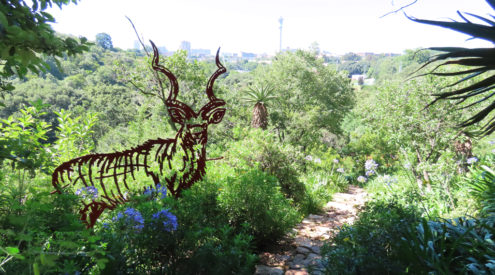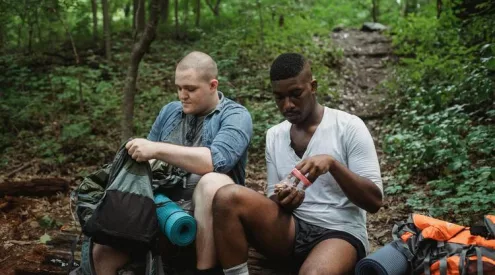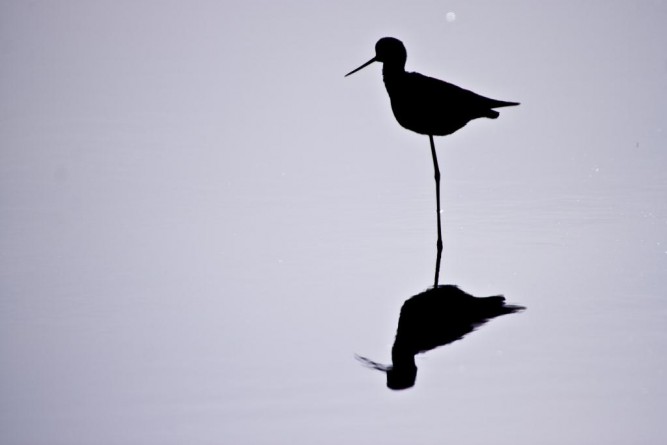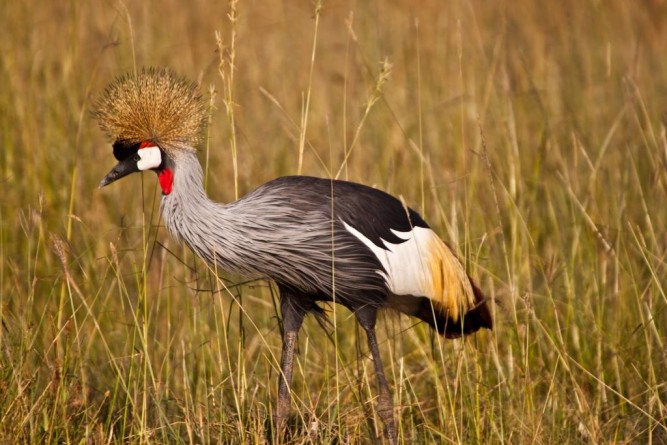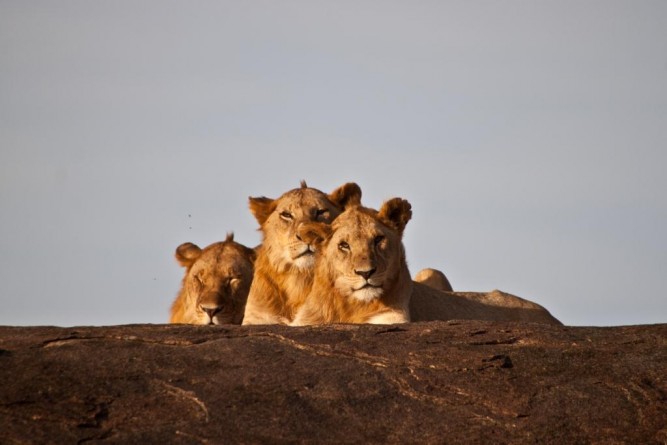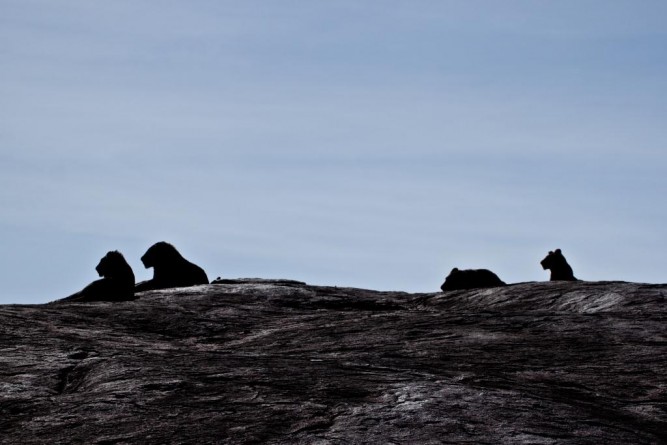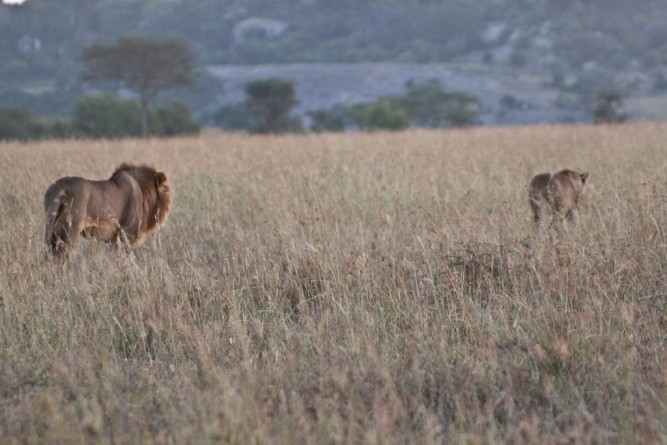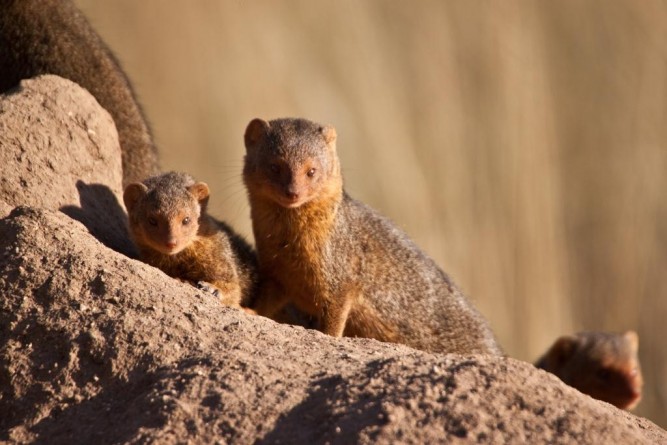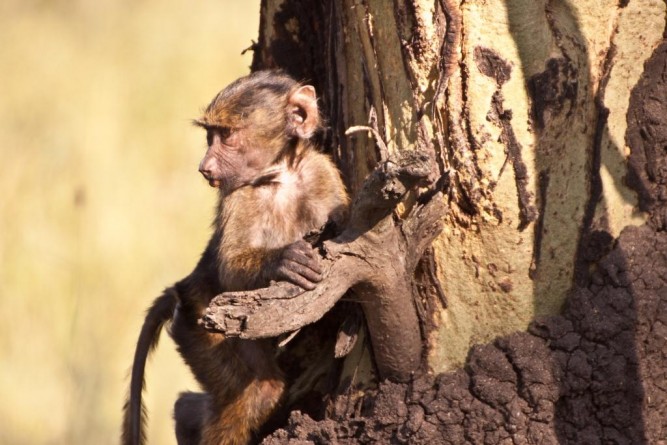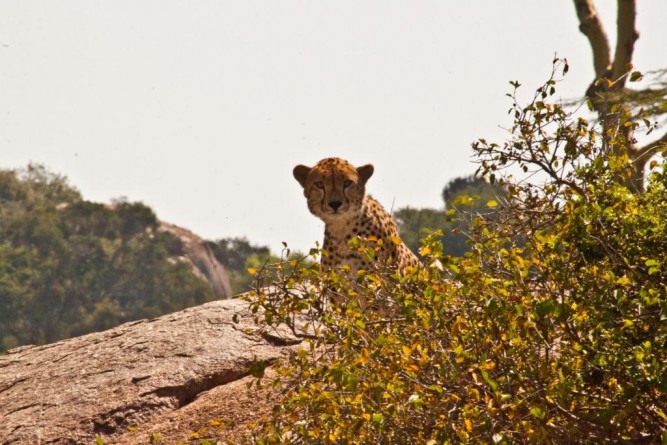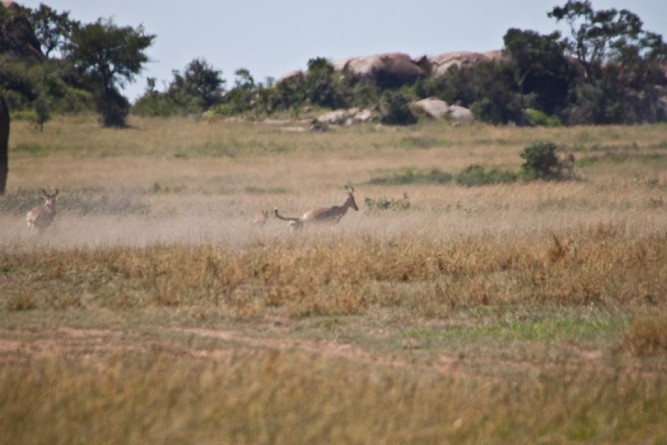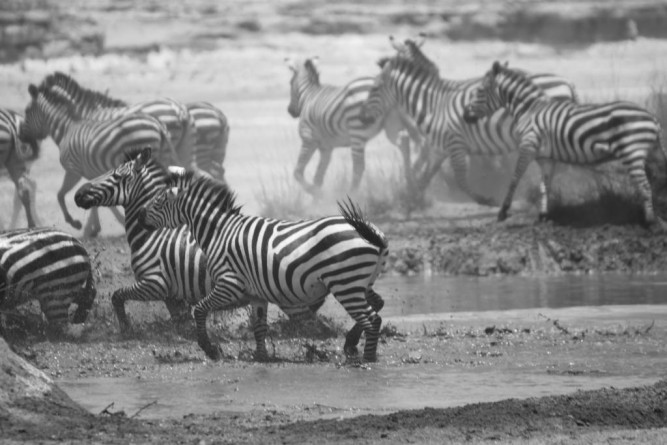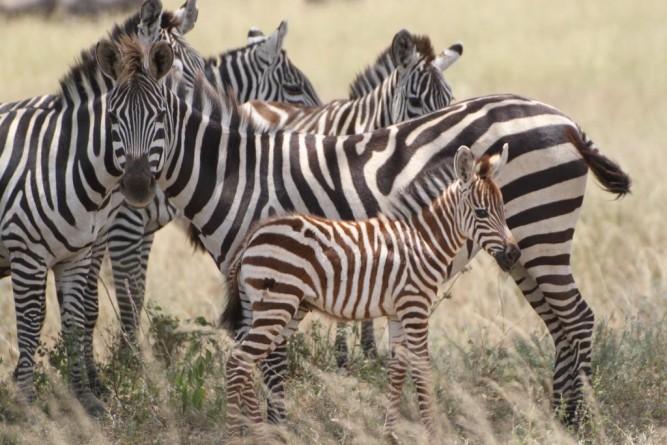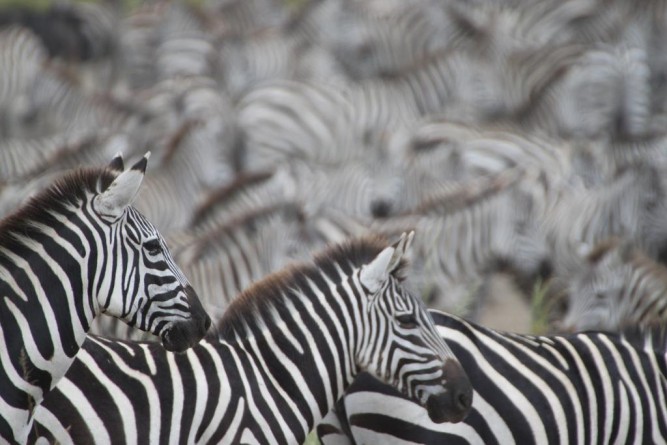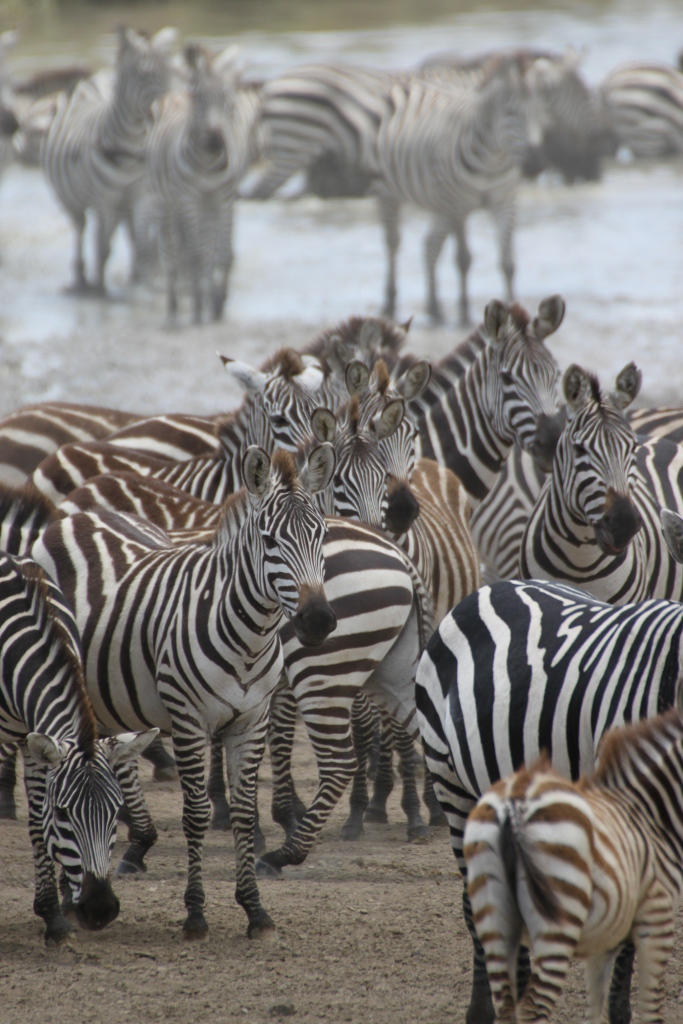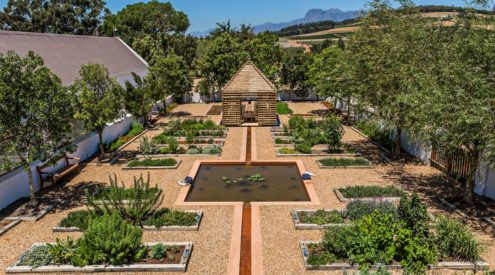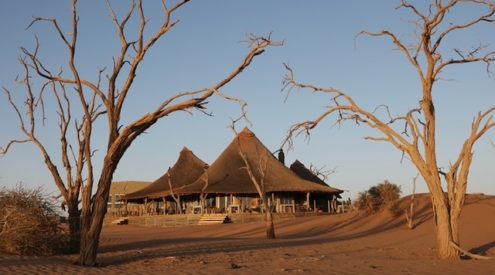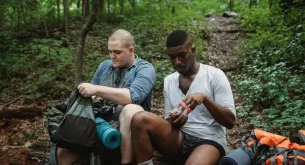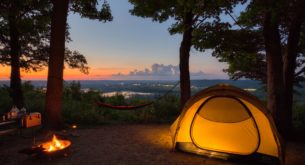Not far south from Seronera in the Serengeti lay the Moru kopjes, an area of rocky outcrops. Due to overbooking, we were assigned to stay at a camp site 25km further south on our Safari Drive booked self-drive safari. With the satellite navigator set we followed the only road south. The bush was becoming increasingly remote with fewer and fewer animals. We crossed a river bed, and promptly got stuck at a concerning angle in thick mud. After a bit of “giving it horns” we escaped in a spray of mud and continued south, but becoming increasingly concerned that we were lost. The number of tsetse flies was also increasing.

After an hour of driving, we finally spotted the ranger post and, stepping out of the car to meet an approaching guard, found ourselves in a tsetse swarm. They were everywhere, in your ears and mouth, and all the while biting. The ranger could not understand why we were there, and after saying we were using the camp site nearby he found a colleague who would show us where it was.
The ranger wandered around aimlessly for a while, trying to decide where a camp site might be, before pointing at a small patch of grass. Clearly, there is no suitable camping site here, and the ranger told us no-one had been this way for many years. We might have stayed except for the fact that there were almost no animals in the area, the drive to where animals were was long, and the site was so tsetse-infested camping would have been unbearable. So we opted to get back in the car and drive back to Moru in the fading light and hope to find a ranger who could give us a more agreeable camping option.
We raced back the way we had come, avoiding getting stuck in the same river bed, and chasing the fading sun. We couldn’t resist stopping for a moment to enjoy the sight of klipspringer on the rocks, and made it to the ranger post in Moru after dark. Luckily, we found a ranger who created a camping spot for us at the base of a large kopje, complete with a herd of buffalo standing guard (although they moved off with a snort pretty quickly), and who knows what on the rocks behind us. At 8.30 pm we set up camp, had a quick dinner and went to bed. Less than an hour later, we realized we were indeed not alone, the kopje behind us was home to some of Moru’s most dangerous residents. Silently, and lit by the slightest shine of the moon, four lions emerged from the kopje. Stopping for a moment only 5 metres from the tent we held our breath and strained to make out the cats in the low light. Luckily, with nothing more than a cursory glance the lions continued into the open grassland ahead of us and disappeared into the gloom. It’s this kind of experience that makes camping in Africa so incredibly exciting.
The following morning, we realised just how beautiful our camping site was. The kopje rose up behind us, and ahead lay a grassland reaching down to the river, studded with rocky outcrops, and with various species grazing. We drove out towards Lake Magadi coming across hyena and bat-eared fox on the way. A pair of crowned cranes looked stunning in the soft morning light.
Back near to our camping site, we discovered a large male lion lying in the grass. He was not alone. We spotted another nearby, then a third, a fourth and finally a fifth big male lion, all with impressive manes. One by one they rose and walked right past us, climbing a nearby kopje and surveying their territory from atop the rock. As the sun continued to rise they moved into a thick tree line at the top of the kopje, and out of sight.
Just 50 metres or so, near the base of another kopje, we found a young lion. Then another, and another. As the males had done these younger pride members moved up onto a rock. Every few moments another lion would rise from the grass and join those on the kopje. In all, we counted thirteen lions. The five big males together on one rock, and what appeared to be six young males and two young females on the other. Where were the adult females? We assumed that some of these were the lions that came through our camp last night given how close they were now to our camp.
We returned to camp to relax, which is difficult to do with a herd of buffalo grazing nearby, but they left us in peace and continued their munching. We returned to the lions in the afternoon. The big males had found various spots to sprawl out on top of their rock, whilst the youngsters had spread about their much smaller rock, many peering over the edges at the us tourists below.
Dear readers, the observant amongst you will have realised that so far on this incredible trip, there is one member of the big five that we have not yet seen – the most stunning and elusive of the big cats – the leopard. So when we received a tip off about where to find one we decided to push the limit of when we had to be back in camp to try and find it. We hadn’t listened to the directions too well and spent some time scouring a kopje we thought to be the right one. Nothing. We tried the next, and the next. Still nothing. The chances of finding this master of camouflage and secrecy were remote, especially as the light was fading fast. Ben convinced us to try one more time on the next kopje. And thank goodness he did, because a slight movement gave away the location of a young female leopard. She was tiny in comparison to the lions we had spent the day with, barely the size of a medium sized dog. As this was our first, and could be our only leopard sighting I decided to try and take a photograph, which will go down as one of the worst I have ever taken. But we had found a leopard and we headed back to camp determined to return in the morning to try and find her again. The buffalo were in camp again, but other than that it was a quiet and restful night.
On our last morning at Moru Kopjes, we rose early (to the sound of lions roaring in the distance) to head back to where the leopard was. We thinking so intently on our chances of seeing it again that we almost drove straight passed a male and female lion lying by the side of the road. She was clearly coming into oestrus and the male was ensuring no other lions gained access. She rose and started off through the grass, he following not far behind.
We carried on to the kopje where the leopard was, but also, there was no sign of her (no surprises). Maybe last evening’s short sighting, and terrible photo were all we were to enjoy of this most beautiful cat. The highlights of the rest of the morning’s drive included a family of dwarf mongooses coming out of their holes in a termite mound to warm up in the morning sun. Unfortunately, did not come across any of the 30 or so black rhino that are said to roam this part of Tanzania .
One thing that is so striking at this time of year, is how many babies are around, whether they be baboons, lions, antelope, or mongooses. It’s an amazing time of year to visit. Heading back to camp to pack up, I noticed a road that we had not taken before and suggested we follow it – although my principle reason was that I was hungry for the bacon sandwiches we would be having for our post-drive snack and this road looked a more direct route back to camp. As we circled below our camp, we had to follow the road passed it and then double back on another road to reach it. Luckily, whilst everyone else was looking at our camp and talking about breakfast, I happened to glance left, and there hidden in some bushes atop a small rock outcrop were two male cheetah.
We stopped and realized the pair were very skittish indeed. They hid but kept peering out from the behind a bush to see if we were still there. But we were patient, and our patience was very much rewarded. The pair relaxed and after coming out into the open they eventually came off the rock and slowly padded through the long grass in the direction of a herd of hartebeest not far ahead of us. Whilst one cheetah found a small tree to lay under in the shade, the other started to stalk, and it was obvious what his goal was; a single new born hartebeest. He got to around 30 metres from it and then sank, so low, that we could not see him over a small ridge of earth next to which he had stopped. Between him and his pray lay open dry mud; no more cover to get closer. We waited. And we waited. And we waited. Nothing. Maybe the distance was too great. Maybe it was too hot. Maybe the lack of cover between him and his prey was too little.
Then a new entrant into the scenario arrived. A lone warthog came from behind the hartebeest, through the middle of them and directly towards the cheetah. It stopped occasionally to smell the air before shuffling along a bit more and then stopping to sniff again. A slight change in its direction meant it was maybe 30 metres from the cheetah, and level between it and us. Could this be it? No. Still nothing from the other side of the ridge of mud. The warthog trotted off, possibly oblivious to its close encounter. We settled back in for a further wait, dreaming of bacon sandwiches. And then, in an instant, the chase was on. The cheetah burst from its position and ran headlong towards the hartebeest. The speed was impressive and the dust rising began to obscure what was happening as hartebeest ran in all directions. But one photo I took that is anywhere near focussed shows very clearly that the young antelope was the target, and that the cheetah got pretty close. But not close enough. Just seconds after it began the chase was over and a single cheetah stood in the grass watching his meal depart at pace. The second cheetah barely stirred during the whole affair, only standing to see what was going on after it was all over.
With camp packed we began our trip southwards, but passing the Lake one more time on our way out of the area we were met with thousands of wildebeest and zebra pouring in from the surrounding grasslands to drink. A strange effect happened at the water’s edge. Whilst animals in the foreground were in focus, a veil of dust behind them made animals in the water look like they were on celluloid film. Out of nowhere, a stampede started and the zebra rushed off in a cloud of dust. And we did the same as we left the Serengeti. At the hill where the exit gate is, that on our way north was so full of animals, was now mostly deserted. The migration had moved west in their eternal search for fresh pastures.



